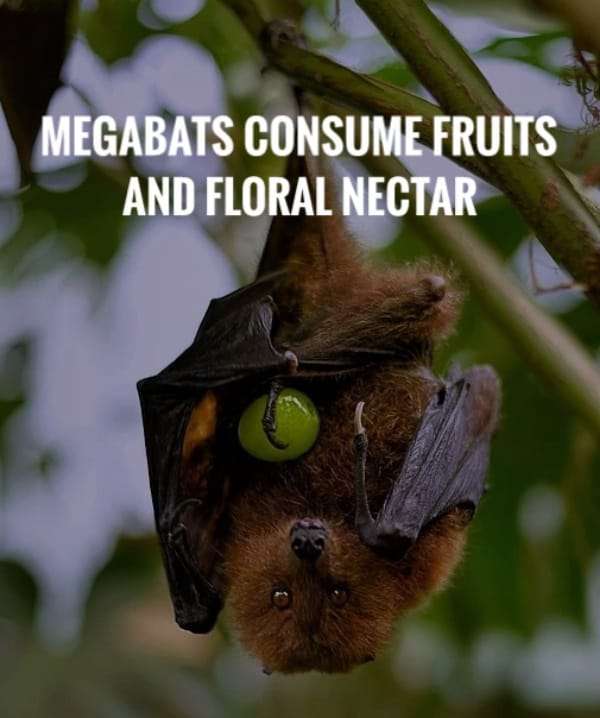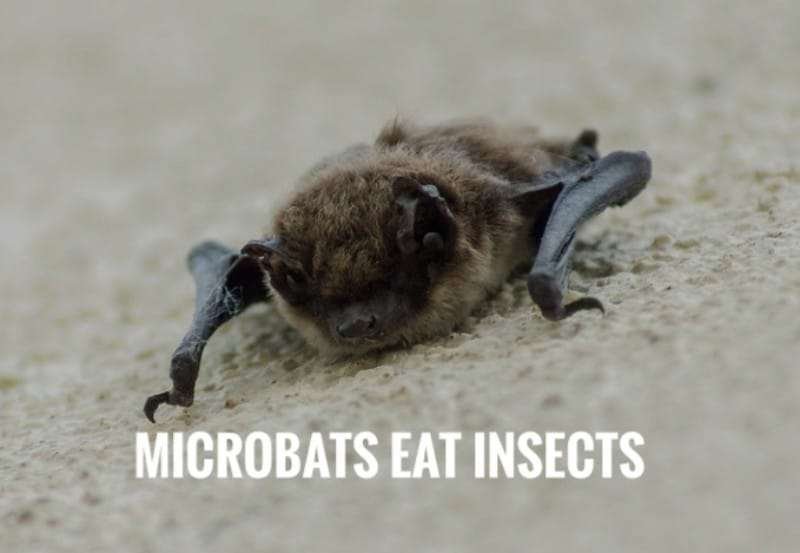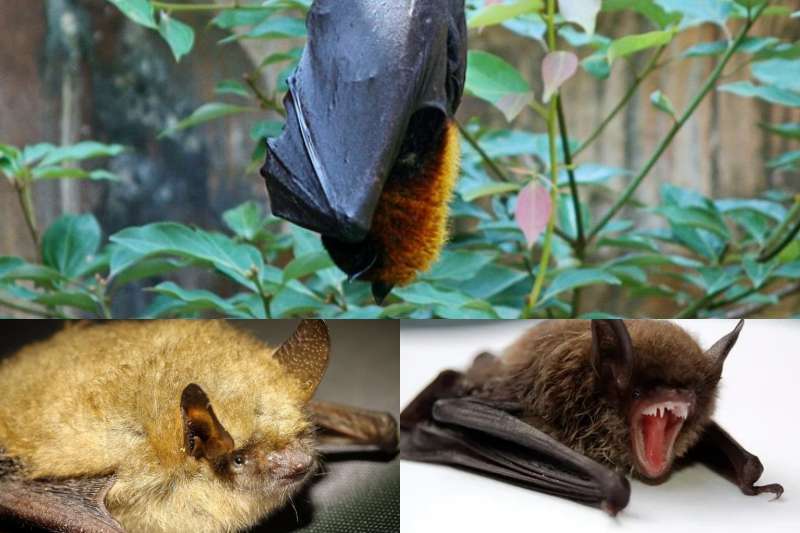After the recent COVID-19 outbreak, bats have become a hot topic for discussion. With species diversity reaching numbers as many as 1000, it is obvious that bats have a wide spectrum of foods in their diet. Despite their basic common physical characteristics, bats differ from each other based on the foods they consume. Keeping in view a large number of bats species, classifying them becomes an important aspect. For this very purpose, we bring you today’s article, “How and What do bats eat and drink? Bat Foods.“
To answer the question, the majority of microbat species are carnivorous and have evolved to only eat insects. Other microbats may consume other flesh, like frogs, lizards, rodents, and sometimes even other bats.
The species of bats, known as vampire bats, are known to feed on the blood of livestock like cattle. The majority of the megabats, along with some microbats, feed on fruits, nectar, pollen, and other plant products like flowers.
In the latter half of this post, “How and What do bats eat and drink? Bat Foods”, we have discussed in detail their feeding habits. So, without further delay, let us get going with the article.
What do Bats Eat and Drink?
Resorting to separate diets for each species, bats have reduced the tremendous competition that might have arisen if they had fed on similar foods. Bats have three categories based on their body characteristics and diet. They are megabats, microbats, and vampire bats.
Megabats:

Larger species of bats, the megabats, have developed the ability to consume fruit and floral nectar. The Texas-Arizona border is home to nectar-eating bats that have adapted to the blossoms of cacti.
Megabats, like flying foxes, are found in the tropics. Sometimes, some microbats also share a similar diet with megabats. Among several fruits, frugivorous bats mainly consume mangoes, bananas, papayas, and largely figs. Many people also see bats feeding from hummingbird feeders filled with sugar water.
Microbats:

On the other hand, microbats are mostly insectivores. These bats fly around at night and feed on any insects that fly around. Bats have a heightened sense of hearing, with special organs in their ears that can sense ultrasound.
Mosquitoes, moths, caddisflies, stoneflies, and cucumber beetles, along with other beetle species, multiple species of hoppers, etc., all fall into a bats diet.
Some bats deviate from the normal course of diet and have taken a knack for lizards, fish, small rodents, other bats, and in a rare case, migrating songbirds.
Vampire Bats:

Bats also comprise another special category, the vampire bats, that feed primarily on the blood of animals. Humans do not have to worry as they do not consume human blood but focus on cattle, horses, goats, etc.
Bats rarely levitate from one diet to another. Fruit-eating bats consume only fruits, while insect-eating bats only insects. Vampire bats, too, stick to their blood diet and do not consume anything otherwise. But there do exist exceptions like the Greater spear-nosed bat, which is an omnivorous species.
How do Bats Eat?
Fruit Bats:
Larger species of bats, the megabats or fruit-eating bats, have adapted to the blossoms of cacti. Their tongues are long, can reach deep into blooms, and can hover in front of a plant, similar to a hummingbird.
Their muzzles are narrow, which gives helps them to reach into flowers. Fruit eaters occasionally use their jaws to pick up food and bring it to an appropriate perch.
Their skulls are short and broad, which enables them to have a good bite at round fruits. They consume the fruit’s pulp and its juices. Bats aid in seed dispersal by spitting out the seeds after consuming the fruit and, therefore, bear immense ecological importance.
Micro bats:
When it comes to insects, bats spot them using echolocation as they have almost negligible vision. The sound waves, after hitting the object, bounce back, which gives the bat the exact location of its prey.
On finding prey, a bat will swoop in and use its wings. They grab it in its tail membrane. Bats have small but sharp razor-like teeth, which they use to chomp on insects and finish them off while being in the air.
Meat-Eating Bats:
Meat-eating bats, on the other hand, employ several techniques to get a hold of their prey. In all cases, what they rely on is their sense of hearing.
Bats like the fringe-lipped bats use their heightened sense of hearing to listen to the frog’s mating calls and then swoop in and grab them. The Giant Noctule Bats prey on birds, which they catch in their tail membrane.
Vampire bats, on the other hand, are extremely silent feeders. They can sense whether an animal is sleeping or not and then carefully land and puncture a blood vessel and drink blood.
All these, and the animal doesn’t even wake up. They also secrete an anti-coagulant in the bloodstream of the animal, which prevents the blood from clotting.
How much do Bats Eat?
Bats are flying mammals. They are mostly nocturnal beings and are around at night, looking for food. Flying in itself is quite an energy-consuming activity. Therefore, a bat must eat accordingly to fulfill its nutritional requirements.
Insectivorous bats need to eat a large number of insects. While small bats like the Small Brown Bat may eat around 500-600 mosquitoes or insects a night, others may eat as many as 4,000 in one single night.
A study states that a Mexican Free Tail Bat colony in the Bracken Cave region in Texas finish off as many as 200 million insects in one night. Such a huge number is equivalent to the weight of around 25 elephants, thereby showing its extensive insect diet.
As for vampire bats, the individual blood consumption is quite low and is approximately two teaspoons of blood in a day.
Fruit-eating bats have separate diets depending on the species, and hence the amount of fruits or nectar they consume also varies.
How often do Bats Eat?
Bats need a lot of energy for their daily activities and, therefore, must consume food daily. However, feeding does not occur throughout the night but in intervals. For insectivorous bats, feeding starts at dusk.
Bats finish up one cycle and then go back to their perch. There they spend their time mating or resting. The second cycle begins before daybreak and continues for a short while before the onset of the morning rays of the sun.
Nectar-feeding bats forage mainly during the day, as flowers mainly blossom during the day. Fruit-eating bats forage during the night almost every day, as they, too, need energy for their bodily activities.
Here, we come to the end of this article, “How and What do bats eat and drink? Bat Foods.” Stay with us, on this website, for much more bat-related content.
References
Animal Food Planet- What do Bats Eat?
ASU- Ask A Biologist- Bat Food
The University of Edinburgh- What Do Bats Eat?
Pest Net- What Do Bats Eat?
Also Read:

A zoology student turned writer. Nature has always been a magnet to me, and to unearth some of its secrets through my articles is my prime intention. If not engaging myself with nature and anime content, you can always find me going through some Bengali classics or filling the air with some soulful Tabla beats. An artist, trying to throw some colors to my blank canvas of life.
